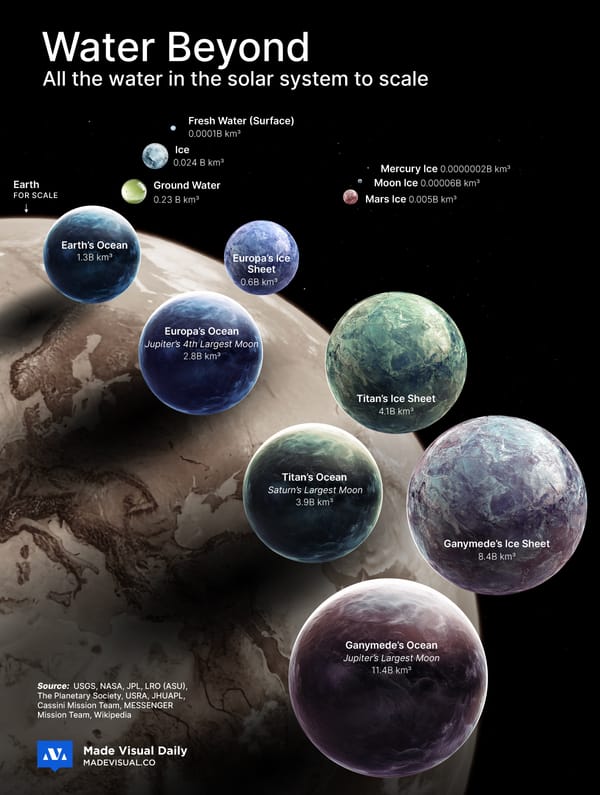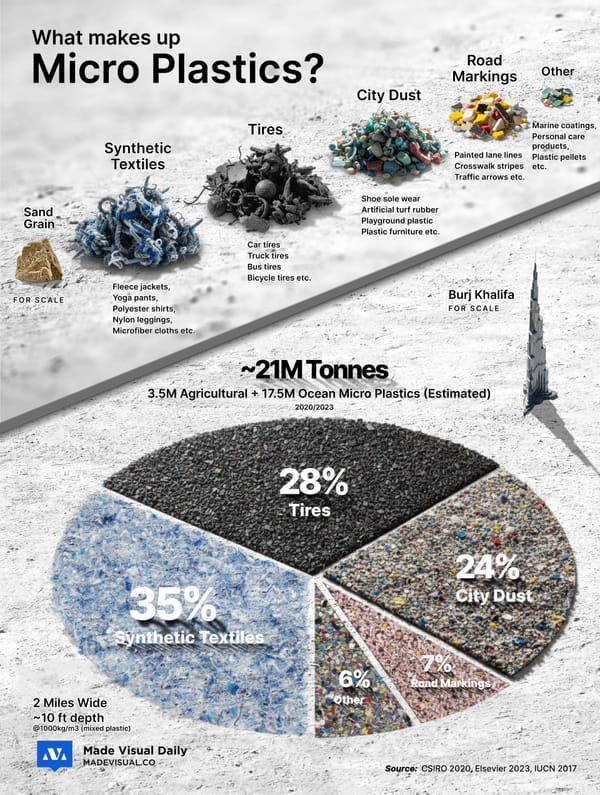The Growing Problem of Mining Tailings: Visualized

If mining built the modern world, that of mass consumer electronics, vehicles and appliances, then tailings are the modern world's unseen byproduct. What collects in what are known as "tailings ponds" are the chemically reactive, often toxic waste left after ore extraction—laden with heavy metals, acids, and residual processing chemicals that can contaminate water, soil, and ecosystems for decades.
Key Takeaways:
1. The Scale
Tailings now account for the largest waste stream on Earth, exceeding all municipal and industrial solid waste combined — a hidden megastructure of slurry and sediment that grows by billions of tonnes each year.
2. The Permanence
Unlike other industrial waste, tailings never truly decay; they must be contained forever, meaning every new mine adds another perpetual liability to the planet’s surface.
3. The Inversion
The ratio of tailings to metal extracted has inverted the logic of mining itself — for every gram of value, there are tonnes of residue, turning extraction into an exercise in waste management disguised as production.
Data & Caveats
The data combines global estimates of tailings volume and composition from mining industry and environmental agency reports, each using different reporting standards and time frames. Because many tailings sites are unmonitored or underreported, especially in developing regions, the true scale is likely larger and more uncertain than official figures suggest.
5 Related Facts
💧 Tailings storage uses more water than some cities.
Large mines can trap hundreds of millions of cubic meters of water in tailings ponds—volumes rivaling municipal reservoirs.
🌋 Old tailings are being re-mined.
As metal prices rise and technology improves, some companies now treat historic tailings as a secondary ore source, recovering copper, gold, and rare earths from past waste.
🏗️ Tailings dams outnumber conventional dams.
There are more than 18,000 tailings dams worldwide—most unregistered and built to lower safety standards than water-supply dams.
🌬️ Dry tailings create airborne dust hazards.
In arid climates, evaporation turns exposed tailings into fine, metal-laden dust that can travel for kilometers and contaminate crops.
🧭 Climate extremes are raising the risk.
More intense rainfall and flooding events are increasing the frequency of tailings dam failures, especially in regions where older facilities were never designed for modern weather volatility.
Notes From The Designer
Inspired by the work and mission of photographer Edward Burtynsky, this graphic was made to contribute to the documentation of the often concealed byproduct of the modern world. Mining is wasteful, but the mechanics of this particular type of waste are not only known to few, but uniquely damaging.
Creating essentially a hellscape from above, this graphic combines techniques I've been experimenting with recently. Imagegen, photoshop generative fill and several other more traditional design approaches combined into a fresh look at the problem that would be nearly impossible to create otherwise.





